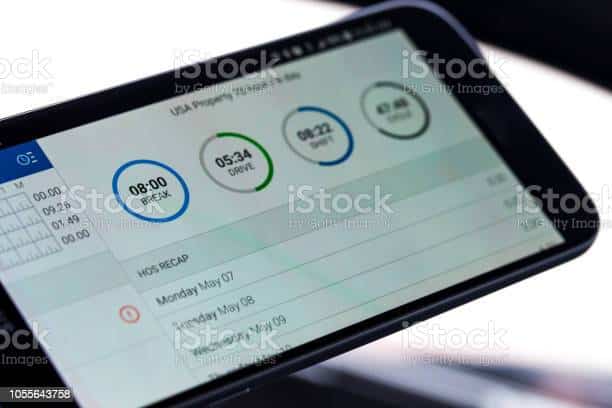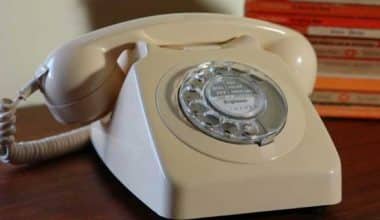An electronic logging device, or ELD, is used in commercial trucking to give drivers and fleet owners an easy and accurate way to maintain the HOS records required by law.
It’s important to know that ELD devices don’t add another layer of rules to the trucking industry. Instead, these gadgets are made to simplify completing a daily task that is already necessary.
What Is the Meaning of ELDs?
ELD is a device that electronically logs a driver’s hours of service (HOS) and records their current duty status. Also, the Federal Motor Carrier Safety Administration has rules about how to record a HOS
What Is an ELD Trucking Device?
An electronic logging device (ELD) is the equipment you can attach to your car to keep track of your service hours (HOS).
The implementation of ELD was put into effect on December 2019. It aims to make drivers’ jobs safer by accurately and automatically tracking their on-duty and off-duty hours. Therefore, making it easier to share and manage data in line with the Hours of Service rules set by the U.S. Department of Transportation.
What Does ELD Do?
The engine-connected ELD keeps driver logs up-to-date and records driving activity. This gives dispatchers and drivers real-time information about available hours and possible violations.
The fleet management software automatically keeps track of HOS statuses, reports, and compliance routes so that managers and office workers can look at them. Hence, the HOS data shows on the driver’s tablet for reference.
What Information Does the ELD Capture?
ELD devices record and send different kinds of information to ensure that companies correctly track service hours and use driver hours best. They consist of the following:
Data from the vehicle includes:
- Identification of the vehicle
- Identification of the motor carrier
- Date / Location/ Time
- Distance covered
- Launching and stopping the engine
- Yard action in 60-minute intervals
- Engine troubleshooting and diagnosis
Data from the driver include:
- Driver’s license or other proof of permitted use
- Driver sign-in/sign-out
- Hours of service (HOS)
- Changes in duty status
- Individual use
- Confirmation of the driver’s daily log
The ELD automatically records these data points, but the driver or support staff can change or add to some by hand. These edits, however, are tracked and must be approved by the driver.
What Does ELD Stand For in Electronics?
ELD stands for “electronic logging device.” It is electronic hardware that links to a vehicle’s engine and records driving hours required by the USDOT and Transport Canada.
It has a screen that lets the driver check their status and also prints hour logs if a USDOT or Ministry of Transportation inspector requests them.
Who Needs ELDs?
ELDs connect to a vehicle’s engine control unit (ECU) to get a complete picture of the engine’s health and send precise, almost real-time GPS location data to a logging device or app that authorities can check when necessary.
A third-party certification is required to use an ELD to record hours of service (HOS). Furthermore, all commercial vehicles must use ELD devices to follow the ELD law and eliminate the old paper logbook methods.
Anyone who works internationally or was previously required to keep a paper daily log should use an ELD, such as:
- Commercial motor vehicle (CMV) drivers who run trucks in the United States
- Those motorists who utilize paper RODS for more than eight days out of every thirty
- Individuals who engage in “drive-away-tow-away” operations, where the commodity is delivered in the vehicle being driven
What Is the Importance of Elds?
- Minimizing administrative burden
- Reducing fuel wastage
- Vehicle diagnostics
- Location tracking and better route management
- Identification of destructive driving behaviors
- Reducing liabilities
- Automated IFTA calculation
- Lower insurance premiums
- Increased safety
- Improvement in CSA scores
How to Use an Electronic Logging Device?
The CMV driver should only have one account, each with their own password and identification number, with a motor carrier. Also, owner-operator carriers must have two versions: one for drivers and one for administrative tasks, such as setting up user accounts.
After logging into the ELD, the driver must review any unidentified journeys. Furthermore, drivers must take responsibility for things that aren’t their fault or say no to unknown trips. Then any unidentified events should have a carrier annotation explaining why they have yet to be identified.
When not on their driving duty, drivers must mark their records or indicate that they are off-duty. If a driver is working sleeper berth hours, they should either show that they are sleeping or update their ELD records later.
Best ELD Devices for Trucks and Owners Operators
#1. KeepTruckin ELD
The KeepTruckin ELD solution is ranked among the best because of its user score of 9.0
- The device plugs right into the port on the car.
- It has an app where truck drivers can inspect vehicles, view logs, communicate, and more.
- The ELD is simple to install and can be turned on anywhere
Features of the Keep Trucking ELD:
- LOG Records
- HOS Alerts
- GPS Tracking
- 2 Ways Messaging
- In-cab WiFi
- Fuel Tax Reporting
- Idle Time Reporting
- Vehicle Diagnostics
- Driver Score Cards
- 24/7 Support
#2. Rand McNally ELD 50
Drivers may examine and confirm records using their smartphone, tablet, or laptop with the ELD 50, a portable E-Log device that sets up in seconds.
- Putting the ELD into the J-Bus Port and downloading the DriverConnect App to a smartphone is all it takes to finish the installation.
- The service package is $19.95 per month.
- Drivers can examine and approve the logs. Also, they can complete DVIRs and change duty status on a smartphone or tablet.
- The ELD may continue to capture HOS logs and keep up to two days’ worth of data information, even if connectivity is lost.
- The DriverConnect App can get engine data from the ELD.
- It allows for location tracking and viewing average fuel efficiency, oil pressure, voltage, coolant temperature, battery hours, as well as boost pressure.
#3. Bigroad Dashlink ELD
The cheapest way to produce engine-connected logs that comply with regulations is through BigRoad’s ELD system, DashLink.
- The smartphone app is easy to use and automatically adds up the number of hours worked (HOS), logs the status of each assignment, and shows the current traffic situation.
- The vehicle’s ECM automatically records driver availability, driving time, and duty status.
#4. Verizon Telematics ELD
In 2017, Verizon made a device that made it easy for truck drivers to follow specific rules.
- Drivers can log on-duty activity, driving, and sleeper berth hours and report a summary of the hours in Verizon Connect.
- Launch WorkPlan, log in, start the engine and then choose the appropriate truck model from the list.
- Change the HOS status to Off Duty before signing out.
- The device also offers fuel costs and safety monitoring tools.
#5. Samara ELD
Samsara ELD offers options to maintain the fleet compliant with the ELD mandate.
- In addition to GPS tracking, WIFI hotspots, sensor data, DVIRs, and document capture, it can also obtain the HOS and duty status.
- The device directly connects to a vehicle’s engine with the OBD port
- A combination of sensors, GPS trackers, and AI-controlled dashcams is used to gather data
- The trailer can be tracked at any time, which can help stop cargo theft.
- Hardware for the Samsara VG34 Gateway Vehicle ELD costs $130, and the annual subscription for each vehicle is $380.
#6. Eroad Ehubo
Ehubo Eroad makes running a transportation company simpler. These are the key capabilities that the device offers:
- Using EROAD messaging between MyEROAD and drivers, Drive Buddy gives real-talk feedback to drivers.
- Fuel filling with tracking of fuel efficiency
- Active detection
- Three reporting digital inputs for an auxiliary link
- Easy and secure hardware-free driver login scheme
- Alerts for speeding, braking, cornering, and other driver behavior
- Incredibly detailed vehicle tracking
- A basic ELD-only package costs $35 per month, and the TotalFleet plan with all the features costs $60 per month.
#7. Garmin ELD
The FMCSA ELD mandate can be easily met using the Garmin ELD for HOS records. Moreover, the best long-term investment option is seen as this one.
- The smartphone always stores accurate records
- There are no recurring expenditures or subscription fees; also, the installation is quick and uncomplicated.
Features of the Garmin ELD
- No recurring fees
- Fuel Monitoring
- Data backup using a mobile application
- Free mobile app with round-the-clock support for fleets of all sizes
#8. Peoplenet ELD
Drivers can always access their log information with this sort of ELD device since it connects displays and data locally, independent of network connectivity.
- Safety managers can use the reporting portal to check records, make corrections, and gain insight into each driver’s HOS while drivers keep track of their available hours.
- The mobile app is compatible with Android-based operating systems.
- At an initial hardware cost per unit of $1100, also this system has one of the highest beginning costs in the industry.
#9. Gorilla Safety ELD
The best document management device is the Gorilla ELD device. It provides excellent ELD compliance and DVIR services. Also, Gorilla Safety is a comprehensive fleet management system, not just an ELD device.
Features of the Gorilla Safety ELD:
- Mechanic inspections for document management
- Affordable free trial support
- Serve a variety of fleet sizes
- Document scanning
- Real-time documents can be transferred to a terminal installation with a Plug-N-Play system.
- ELD units cost $175 each
- The app on a smartphone creates a wireless link to the truck’s ECM through the ELD adaptor Prime8.
#10. OMNITRACKS ELD
The Omnitracks ELD has the following features:
- Reports on Fuel Tracking Safety
- Driver Surveillance
- Free Trial Messaging with 24/7 Support
- Bluetooth Support Delivery Proof
- It provides the Omnitracs FMS Unit and Omnitracs XRS as two ELD compliance units.
- The Omnitracs XRS gadget can be installed instantly.
- The car must have a hardwired connection for the Omnitracs IVG device.
- There is a cost fee of $800.
Conclusion
ELD devices are now a must-have for trucking companies and drivers who want to stay in line with FMCSA rules and make the roads safer. Hence, the best ELD devices for trucks and owner-operators are those that offer a range of features, are easy to use, and comply with FMCSA regulations. Also, by using ELD devices, trucking companies can improve their operations, lower the risk of accidents, and make drivers safer and more productive.
- ELD MANDATE: meaning, how it works and reviews
- LOG MANAGEMENT TOOLS: Definition, Free, and Best Log Management Tools [2023]






